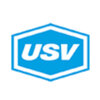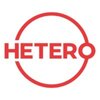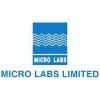
i
Hikal
Filter interviews by
Hikal Fire Officer Interview Questions and Answers
8 Interview questions
The fire Tetrahedron is a model that illustrates the four elements necessary for a fire to occur: fuel, heat, oxygen, and a chemical chain reaction.
Fuel: any material that can burn, such as wood, paper, or gasoline
Heat: the energy needed to raise the temperature of the fuel to its ignition point
Oxygen: the presence of oxygen in the air that supports combustion
Chemical chain reaction: a process where the heat produ...
Types of extinguishers include water, foam, CO2, dry powder, and wet chemical.
Water extinguishers are suitable for Class A fires involving solid materials like wood or paper.
Foam extinguishers are effective on Class A and B fires, involving flammable liquids.
CO2 extinguishers are used for electrical fires (Class C) and flammable liquids (Class B).
Dry powder extinguishers are versatile and can be used on Class A, B...
Fire elements refer to the components necessary for a fire to occur, including fuel, heat, oxygen, and a chemical chain reaction.
Fuel: Any material that can burn, such as wood, paper, or gasoline.
Heat: The energy needed to raise the temperature of the fuel to its ignition point.
Oxygen: The presence of oxygen in the air allows the fire to burn.
Chemical chain reaction: The process by which the fuel is broken down an...
Fires are classified into different classes based on the materials involved and the appropriate extinguishing methods.
Class A: Ordinary combustibles (wood, paper, cloth) - Extinguished with water.
Class B: Flammable liquids (gasoline, oil) - Extinguished with foam or dry chemicals.
Class C: Electrical fires - Use non-conductive extinguishing agents like CO2.
Class D: Combustible metals (magnesium, sodium) - Requires ...
Fires are classified based on the type of fuel involved, such as Class A, B, C, D, and K fires.
Class A fires involve ordinary combustibles like wood and paper
Class B fires involve flammable liquids like gasoline and oil
Class C fires involve energized electrical equipment
Class D fires involve combustible metals like magnesium and titanium
Class K fires involve cooking oils and fats
Types of classification include hierarchical, binary, and multi-class.
Hierarchical classification involves organizing categories into a tree-like structure.
Binary classification involves categorizing data into two classes.
Multi-class classification involves categorizing data into more than two classes.
A tetrahedron is a polyhedron with four triangular faces, six straight edges, and four vertex corners.
A tetrahedron is a three-dimensional shape.
It is made up of four equilateral triangles.
It has a total of six edges and four vertices.
Examples of tetrahedrons include pyramids and certain molecular structures.
Safety is the practice of preventing accidents, injuries, and other potential hazards in order to protect individuals and property.
Safety involves identifying and assessing risks in order to implement measures to mitigate them.
It includes providing proper training and equipment to ensure the well-being of individuals.
Safety protocols should be regularly reviewed and updated to address new risks and challenges.
Exam...
Hikal Fire Officer Interview Experiences
2 interviews found

(3 Questions)
- Q1. What is fire Tetrahedron
- Ans.
The fire Tetrahedron is a model that illustrates the four elements necessary for a fire to occur: fuel, heat, oxygen, and a chemical chain reaction.
Fuel: any material that can burn, such as wood, paper, or gasoline
Heat: the energy needed to raise the temperature of the fuel to its ignition point
Oxygen: the presence of oxygen in the air that supports combustion
Chemical chain reaction: a process where the heat produced b...
- Q2. Classification of fire
- Ans.
Fires are classified based on the type of fuel involved, such as Class A, B, C, D, and K fires.
Class A fires involve ordinary combustibles like wood and paper
Class B fires involve flammable liquids like gasoline and oil
Class C fires involve energized electrical equipment
Class D fires involve combustible metals like magnesium and titanium
Class K fires involve cooking oils and fats
- Q3. Indian standard
- Ans. Class A Class B Class C Class D Class F
Interview Preparation Tips
Fire is a chemical chain reaction
Fire officer👮 responsibility for decision maker this means to that the fire officer will need to make a decision about the safety rescue people from FIR and the best way to handle fighting the Fire coodincoodinetinating rescue efforts und Strategies for fire fighting fall upon shoulders of the
fire officer fire officer also provide administrative function for the fire department they will be the ones handle the company correspondence maintaining office records recording minutes for the fire department meetings and ordering
I appeared for an interview before Nov 2022.

(6 Questions)
- Q1. What is safety and
- Ans.
Safety is the practice of preventing accidents, injuries, and other potential hazards in order to protect individuals and property.
Safety involves identifying and assessing risks in order to implement measures to mitigate them.
It includes providing proper training and equipment to ensure the well-being of individuals.
Safety protocols should be regularly reviewed and updated to address new risks and challenges.
Examples ...
- Q2. What is fire elements
- Ans.
Fire elements refer to the components necessary for a fire to occur, including fuel, heat, oxygen, and a chemical chain reaction.
Fuel: Any material that can burn, such as wood, paper, or gasoline.
Heat: The energy needed to raise the temperature of the fuel to its ignition point.
Oxygen: The presence of oxygen in the air allows the fire to burn.
Chemical chain reaction: The process by which the fuel is broken down and rel...
- Q3. Types of classification
- Ans.
Types of classification include hierarchical, binary, and multi-class.
Hierarchical classification involves organizing categories into a tree-like structure.
Binary classification involves categorizing data into two classes.
Multi-class classification involves categorizing data into more than two classes.
- Q4. Types fire class
- Ans.
Fires are classified into different classes based on the materials involved and the appropriate extinguishing methods.
Class A: Ordinary combustibles (wood, paper, cloth) - Extinguished with water.
Class B: Flammable liquids (gasoline, oil) - Extinguished with foam or dry chemicals.
Class C: Electrical fires - Use non-conductive extinguishing agents like CO2.
Class D: Combustible metals (magnesium, sodium) - Requires speci...
- Q5. Types types of extinguisher
- Ans.
Types of extinguishers include water, foam, CO2, dry powder, and wet chemical.
Water extinguishers are suitable for Class A fires involving solid materials like wood or paper.
Foam extinguishers are effective on Class A and B fires, involving flammable liquids.
CO2 extinguishers are used for electrical fires (Class C) and flammable liquids (Class B).
Dry powder extinguishers are versatile and can be used on Class A, B, and...
- Q6. What is tetrahedron
- Ans.
A tetrahedron is a polyhedron with four triangular faces, six straight edges, and four vertex corners.
A tetrahedron is a three-dimensional shape.
It is made up of four equilateral triangles.
It has a total of six edges and four vertices.
Examples of tetrahedrons include pyramids and certain molecular structures.
Interview Preparation Tips
Skills evaluated in this interview
Top trending discussions






Interview questions from similar companies

I applied via Naukri.com and was interviewed in Sep 2020. There were 3 interview rounds.
Interview Questionnaire
1 Question
- Q1. Technical
Interview Preparation Tips

Interview Preparation Tips
You need to stay calm and should apply presence of mind. Please go through the job description thoroughly word-by-word and recheck your resume to ensure that you are a best-fit for the position.
Skills: Communication

I applied via Walk-in and was interviewed in Feb 2021. There were 3 interview rounds.
Interview Questionnaire
1 Question
- Q1. About basic knowledge in our department
Interview Preparation Tips


(2 Questions)
- Q1. What is your privious company
- Q2. How much year of experience in your department
General apptitude test, department related questions
Interview Preparation Tips


(1 Question)
- Q1. Why are you looking for a change?
- Ans.
I am looking for a change to further develop my skills and take on new challenges.
Seeking new opportunities for growth and advancement
Desire to expand my knowledge and expertise
Looking for a more challenging and fulfilling role
Want to work in a dynamic and innovative environment
Seeking better work-life balance

I applied via LinkedIn and was interviewed before Aug 2022. There were 4 interview rounds.

(1 Question)
- Q1. General introduction
(1 Question)
- Q1. About engineering and job profile related questions
(1 Question)
- Q1. Salary discussion

I applied via Company Website and was interviewed in Aug 2023. There were 2 interview rounds.

(2 Questions)
- Q1. Basic hplc technique
- Q2. Wet chemistry technique
- Ans.
Wet chemistry techniques involve using liquid reagents to analyze chemical compounds.
Wet chemistry techniques are used to analyze chemical compounds in a liquid state.
Common wet chemistry techniques include titration, chromatography, and spectrophotometry.
These techniques are often used in laboratories for qualitative and quantitative analysis.
Wet chemistry techniques require careful measurement and mixing of reagents ...

I applied via Walk-in and was interviewed in Jul 2021. There was 1 interview round.
Interview Questionnaire
3 Questions
- Q1. Ro plant working
- Q2. Ro water parameters
- Ans.
RO water parameters refer to the quality and characteristics of water produced by reverse osmosis process.
RO water should have a pH level between 6.5 and 8.5
Total dissolved solids (TDS) should be less than 500 ppm
RO water should be free from bacteria, viruses, and other harmful contaminants
The water should have a low level of hardness and alkalinity
RO water should be stored in a clean and sanitized container
- Q3. WFI, RO, steam generator
Interview Preparation Tips
Hikal Interview FAQs
Tell us how to improve this page.
Hikal Interviews By Designations
- Hikal Production Officer Interview Questions
- Hikal Officer Interview Questions
- Hikal Junior Officer Interview Questions
- Hikal Scientist Interview Questions
- Hikal Deputy Manager Interview Questions
- Hikal Executive Production Interview Questions
- Hikal Production Manager Interview Questions
- Hikal Assistant Manager Interview Questions
- Show more
Interview Questions for Popular Designations
Overall Interview Experience Rating
based on 2 interview experiences
Difficulty level
Duration
Interview Questions from Similar Companies
Hikal Fire Officer Reviews and Ratings
based on 2 reviews
Rating in categories
|
Officer
535
salaries
| ₹2.7 L/yr - ₹6.2 L/yr |
|
Production Officer
275
salaries
| ₹2.2 L/yr - ₹5.6 L/yr |
|
Executive
233
salaries
| ₹4.5 L/yr - ₹8.3 L/yr |
|
Junior Officer
231
salaries
| ₹2 L/yr - ₹4.6 L/yr |
|
Assistant Manager
161
salaries
| ₹6.2 L/yr - ₹13.2 L/yr |

Hetero

Abbott

Micro Labs

GlaxoSmithKline Pharmaceuticals
- Home >
- Interviews >
- Hikal Interview Questions











